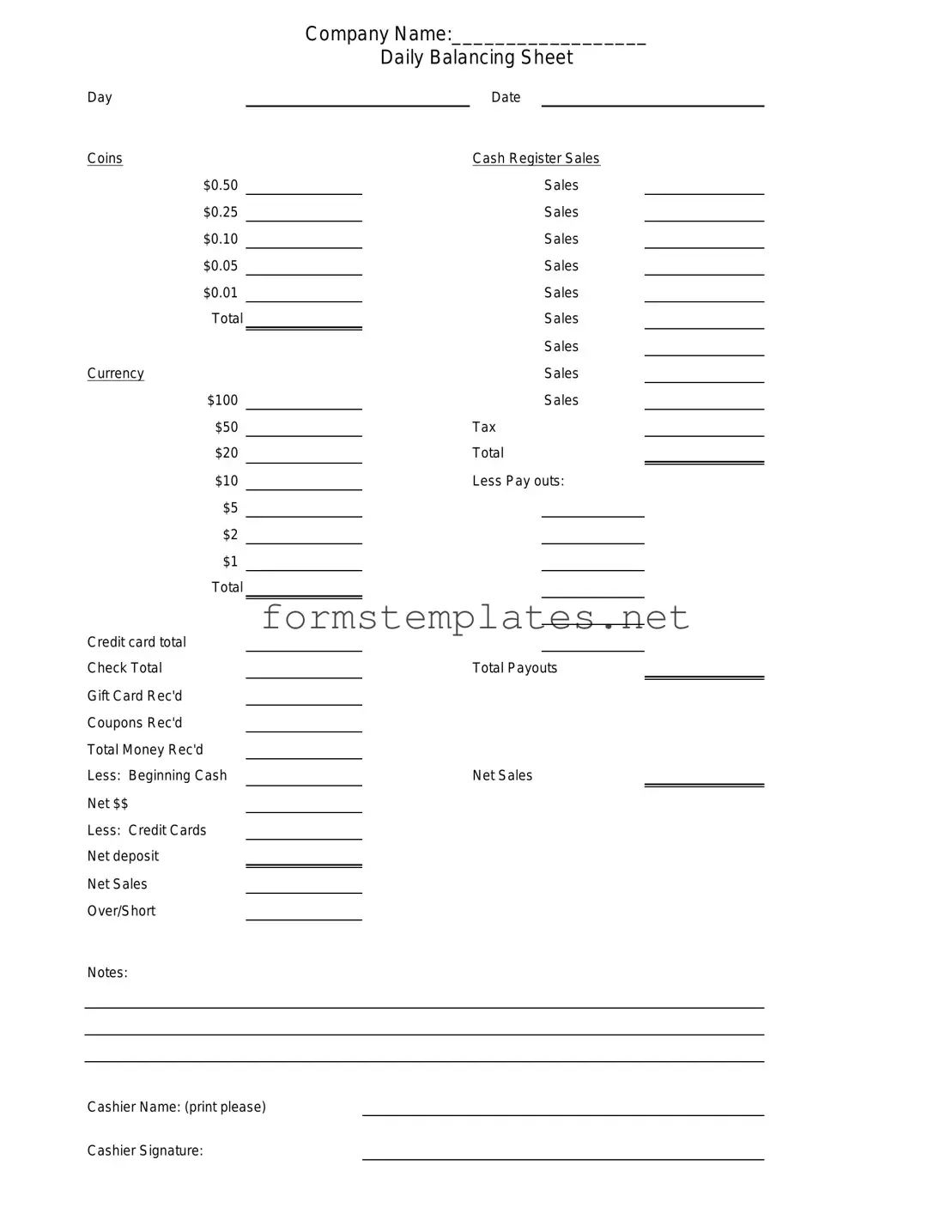Free Cash Drawer Count Sheet Template
The Cash Drawer Count Sheet is a vital document used by businesses to track the amount of cash in a cash drawer at the end of a shift or business day. This form helps ensure accurate accounting and prevents discrepancies that could lead to financial loss. By systematically recording cash totals, businesses can maintain transparency and accountability in their cash handling processes.
Open Editor Now

